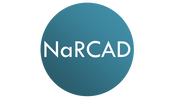 by Jerry Avorn, M.D., NaRCAD Co-Director Tags: Health Policy, Jerry Avorn, Medications A number of academic detailing programs began in the 1990s or early 2000s, when the cost of many useful medications in primary care was prohibitive. Some were available then only as expensive brand-name products: clopidogrel (Plavix) as an anti-platelet agent, alendronate (Fosamax) for osteoporosis. Others could plausibly be replaced in some patients by similar agents in the same class: atorvastatin (Lipitor) for elevated cholesterol, celecoxib (Celebrex) for arthritis and pain, omeprazole and esomeprazole (Prilosec and Nexium) for acid-peptic disease. Then came the game-changing developments around 2011-2012, when the patents on blockbuster drugs like Lipitor and Plavix expired. This was referred to as the “patent cliff” by some; others dubbed it “Pharmageddon.” Meanwhile, discount drug stores, led by Wal-Mart, had been introducing the $4-a-month generic prescription. Within a short period of time, most common drug categories had one or more key medications available that made it possible to manage many common primary care problems—hypertension, high cholesterol, diabetes—for a modest monthly cost. While these developments were a boon to patients and payors, they were not good news for the large pharma companies, which had to reassess their business models in the post-blockbuster era. But Pharmageddon also had an impact on another, much smaller group: the tiny international academic detailing community. Many sponsors of academic detailing programs had been attracted by the prospect that promoting evidence-based practice could also help contain rising drug costs. While that was never the main goal of such work for many of us, it was an attractive feature—at least in part—for many funders in both the public and private sectors. Stark evidence of this came in a conversation I had with a health insurance executive about the possibility of starting an academic detailing program for primary care providers. “Frankly,” he told me, “we’re not focusing much attention any more on drugs in primary care. Many of them are pretty cheap now. All our energies are going to the expensive specialty drugs.” I guess if the bottom line is all that matters, any M.B.A. would come to the same conclusion about academic detailing in primary care. However, if the mission of academic detailing is to help health care professionals take better care of their patients, then the goal of quality improvement serves as reason enough in itself. Several state government agencies get this (PA, SC, VT, MA, etc.), as do some Canadian provinces and other nations. But in many private U.S. health care systems, the bottom line still rules. Luckily, things are changing yet again to make academic detailing potentially attractive even for those whose focus is mostly on finances. Growing impact of the HEDIS measures (Healthcare Effectiveness Data and Information Set) and the Medicare “stars” rating system means that millions of dollars of reimbursement now depend on how a health care system performs on several quality measures. Many of these measures depend upon optimal medication use for conditions such as diabetes, hypertension osteoporosis, and elevated cholesterol; others assess cancer screening and other non-medication-related priorities that can be addressed by academic detailers. So for those of us who always felt that academic detailing is about optimizing patient care, that goal remains as important as ever. And for those who are concerned with how academic detailing can affect a health care system’s bottom line, even though Pharmageddon temporarily took the edge off some of those concerns in primary care, the renewed focus on outcomes and quality measures, many of which are so drug-dependent, means that this reason to improve prescribing is also now back on the table. About the Author: Dr. Jerry Avorn is Professor of Medicine at Harvard Medical School and Chief of the Division of Pharmacoepidemiology and Pharmacoeconomics. A general internist and geriatrician, he pioneered the concept of academic detailing and is recognized internationally as a leading expert on this topic and on optimal medication use, particularly in the elderly. Dr. Avorn has published over 250 papers on these topics over the past three decades. This article originally appeared in NaRCAD’s Winter 2014/15 Newsletter.
0 Comments
Leave a Reply. |
Highlighting Best PracticesWe highlight what's working in clinical education through interviews, features, event recaps, and guest blogs, offering clinical educators the chance to share successes and lessons learned from around the country & beyond. Search Archives
|
